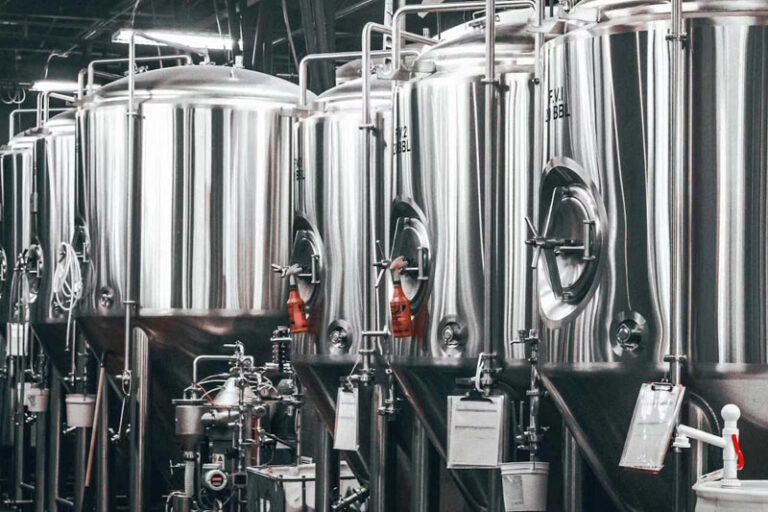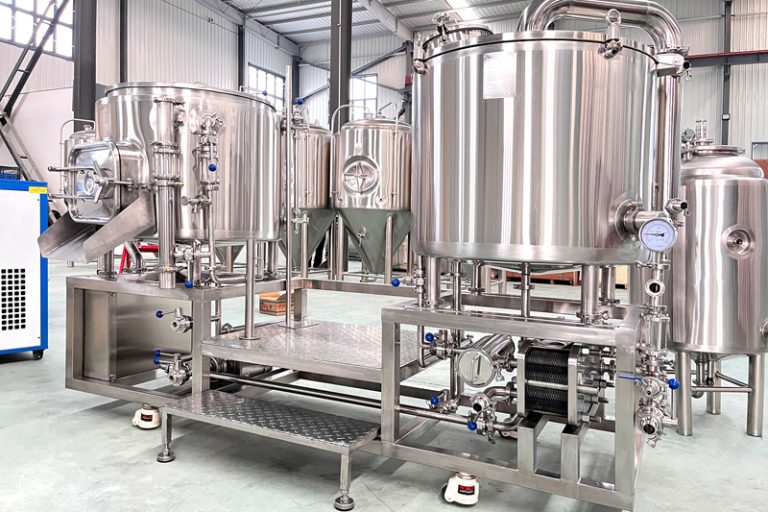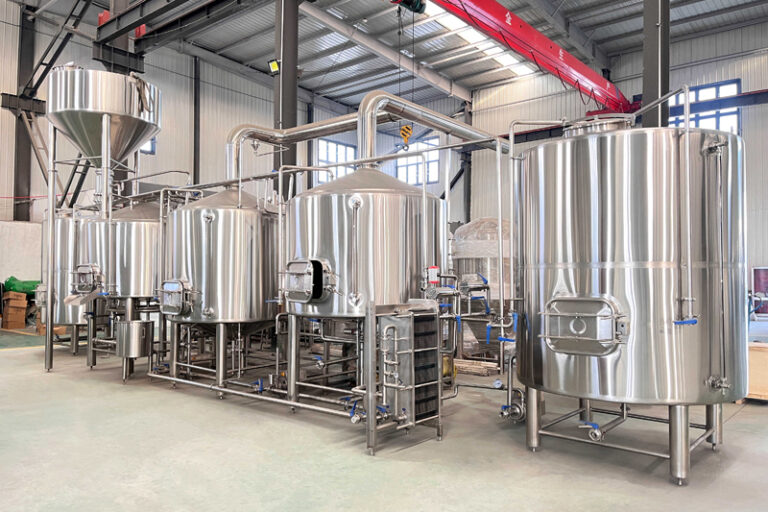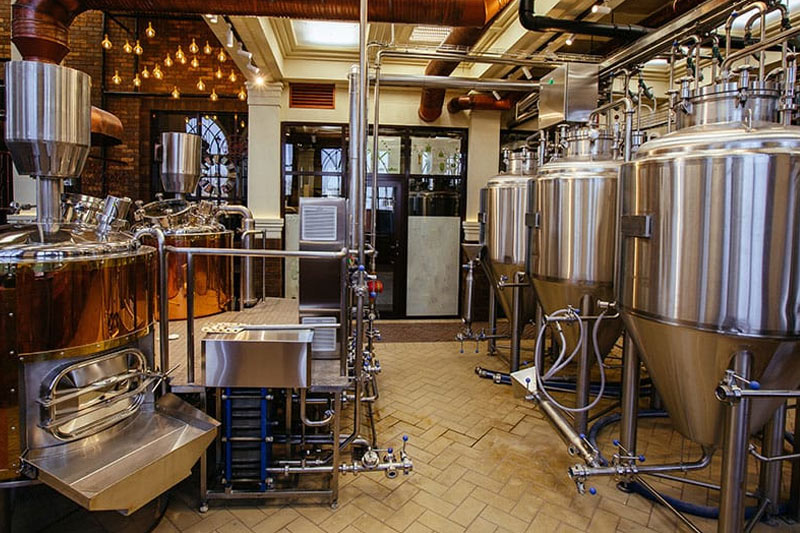Beer brewing combines science and art, and professional equipment is the key to achieving this. For home brewers, the right equipment can help accurately control every link and improve the quality of the beer; while for larger breweries, advanced equipment can increase production and maintain product consistency. A deep understanding of different types of brewhouse equipment will directly affect production efficiency, beer quality stability, and brand competitiveness.
Types of Brewhouse Systems
Manual Brewhouse Systems
The operation process of the manual brewhouse systems is completed manually, such as raw material placement, temperature control, valve switching, wort transfer, etc., which all require brewers to operate one by one.
Applicable people:
- Beginners or small-scale family craft brewing entrepreneurs
- People with limited budgets who want to control the entire operation process
Features:
- The lowest cost and simple system structure
- Small equipment size and small footprint
- Flexible operation, parameters can be adjusted according to experience
- With high requirements for operator experience, batch differences are prone to occur
- Relatively low efficiency and limited production capacity
Recommended application scenarios:
Craft breweries, experimental brewing laboratories, teaching venues
Semi-Automated Brewhouse Systems
Semi-automated brewhouse systems automate some key links, such as automatic control of Mash temperature and automatic adjustment of fermentation tank cooling, but material handling and valve switching still require manual intervention.
Applicable people:
- Entrepreneurs with a certain brewing foundation
- Small to medium-sized breweries want to balance flexibility and efficiency
Features:
- Operation is more efficient than manual systems and reduces human errors
- Retain a certain amount of manual operation space, suitable for personalized adjustments
- Moderate cost, balance between function and budget
- Can achieve stable batch production, but still requires human supervision
Recommended application scenarios:
Community breweries, craft beer brand startups, chain catering supporting breweries
Fully Automated Brewhouse Systems
Fully automated brewhouse systems are controlled by PLC or touch screen to realize the automation of the whole process from mash, boiling, fermentation, cleaning, etc. The system can preset the recipe and complete multiple batches of production with one click.
Applicable people:
- Medium and large commercial breweries
- Customers with high requirements for output, quality consistency, and production efficiency
Features:
- Highly automated, easy to operate, standardized production
- Increase production capacity and reduce labor costs
- The recipe can be preset, and repeated production is stable and reliable
- The initial investment is high, and there are certain requirements for equipment commissioning and maintenance
Recommended application scenarios:
Large-scale fine breweries, regional bulk sales brands, OEM factories

Brewery equipment components
Malt miller
The malt miller is the starting point of brewing, which crushes the dry malt for mash. Common equipment is a double-roller or four-roller mill. High-quality milling equipment can adjust the roller distance to ensure that the shell is complete and the powder inside is uniform, which is conducive to subsequent filtration.
Brewhouse system
- Mash tun: Controls temperature to activate enzymes, usually heated by electricity or steam.
- Lauter tun: Separates wort from dregs, structural design affects filtration efficiency.
- Kettle tank: Boils wort and adds hops, determines the bitterness and aroma of beer.
- Whirlpool tank: Precipitates proteins and impurities, and improves wort clarity.
Fermentation tanks
Commonly used are conical bottom stainless steel tanks with good sealing and pressure resistance. Fermentation tanks are usually equipped with temperature control jackets to accurately adjust the internal temperature. In addition, the conical bottom facilitates yeast sedimentation and collection, which is conducive to reuse.
Cooling system
The cooling system is not only used for fermentation temperature control but also for rapid cooling of wort after boiling.
Plate heat exchanger
During the wort cooling stage, the plate heat exchanger exchanges heat with the high-temperature wort through ice water or cold water, quickly cooling it to the temperature required for fermentation while reducing the risk of infection.
Cold water tank
The cold water tank can store coolant for circulation. It can be used with industrial chillers to improve cooling efficiency and is suitable for multi-tank linkage production scenarios. Medium and large wineries are recommended to configure a cold water circulation system to improve the overall energy efficiency ratio.
CIP system
The CIP system uses acid and alkali liquids to clean the inside of the brewing equipment to improve hygiene standards. Small wineries can use push-type CIP units, which are cost-effective; medium and large wineries need to be equipped with automated CIP stations to achieve continuous cleaning and sterilization.

How to Choose Brewhouse Equipment Correctly?
- Clarify the production scale and goals: First, determine your monthly production target, such as brewing 200 liters per day or several thousand liters per month. The scale determines the capacity of the brewhousesystem, fermentation tank, and the number of equipment. It is recommended that starters start with small equipment and gradually expand the capacity after sales stabilize.
- Choose the right degree of automation: Manual systems are low-cost but rely on manual experience; semi-automatic systems are more efficient and retain operational flexibility; fully automatic systems are suitable for factories that require standardization and mass production. When purchasing, you should combine budget, manpower configuration, and management capabilities.
- Pay attention to equipment materials and processes: high-quality stainless steel (such as 304 or 316L) is the first choice for brewing equipment, which is highly corrosion-resistant and easy to clean. The welding process should be smooth and without dead corners to avoid bacterial growth. Checking the manufacturer’s grinding accuracy and interface sealing is also an important indicator for judging quality.
- Space layout: Reasonably plan the equipment layout according to the size of the plant, and reserve necessary operating channels and cleaning space. At the same time, consider whether it is possible to add fermentation tanks or packaging lines in the future. Choosing a system with modular expansion capabilities is more valuable in the long run.
- After-sales service and technical support: New users often encounter debugging or process problems when using equipment. When choosing equipment manufacturers, it is recommended to give priority to suppliers who provide installation guidance, remote debugging, troubleshooting, spare parts supply, and other comprehensive after-sales services, which can effectively reduce the uncertainty in trial operation.

Installation and maintenance tips for Brewhouse Equipment
Whether the installation and commissioning of brewhouse equipment is standardized is directly related to the later production efficiency and beer quality. For novices, every detail is worth paying attention to from the preparation stage to daily maintenance.
- Preparation before installation: Before the equipment arrives, ensure that the plant has a stable power supply system, water supply and drainage interfaces, ventilation and exhaust facilities, and a reasonable equipment layout space. The ground needs to be flat and non-slip, with a certain load-bearing capacity, which is convenient for equipment fixation and drainage.
- Equipment commissioning and operation: After all equipment is installed, no-load test and water test run are required. Check whether the pump runs smoothly, whether the valve switch is flexible, whether the temperature control is accurate, whether the stirring system is normal, etc., to ensure that the entire process can be stably executed.
- Daily inspection of equipment: Fermentation tanks, mash tun, plate heat exchangers, and other key components need to be cleaned after use to prevent residual blockage or fermentation pollution. Regularly check whether the seals, pump shafts, and valves are worn and aged to prevent leakage or damage.
- Establish a maintenance and record-keeping mechanism: It is recommended that the winery establish a basic equipment maintenance file to record the operation status and maintenance time of each component. Key parts should be kept in stock for emergency replacement to prevent production plans from being affected by equipment downtime.

FAQ
How many liters of equipment can a novice start brewing with?
It is recommended to start with a 500L (5HL) system, which can meet the needs of trial production and market verification, and is also convenient for future expansion.
Is it necessary to choose an automatic brewhouse system?
Automation can greatly reduce the burden of manual operation and improve batch consistency, but the initial cost is high. It is recommended to choose semi-automatic equipment in the initial stage and upgrade it according to production capacity later.
What are the precautions for cleaning brewhouse equipment?
Equipment cleaning is the key to ensuring the quality of beer, especially the mash tun and fermentation tank. Use the CIP cleaning system for cleaning regularly, and pay attention to check whether the spray ball is working properly. Use high-temperature water and appropriate detergents to ensure that yeast residues and stains are removed. In addition, the cooling system, filtration system, and other equipment are thoroughly cleaned every month to prevent impurities from accumulating.
How to evaluate production efficiency when selecting equipment?
The evaluation of production efficiency should take into account the equipment’s processing capacity, degree of automation, and energy consumption. The equipment’s processing capacity is usually measured by the capacity of each mash or fermentation, while the degree of automation affects the convenience and stability of operation. Efficient heating and cooling systems can significantly reduce energy consumption, especially in large-scale production.

